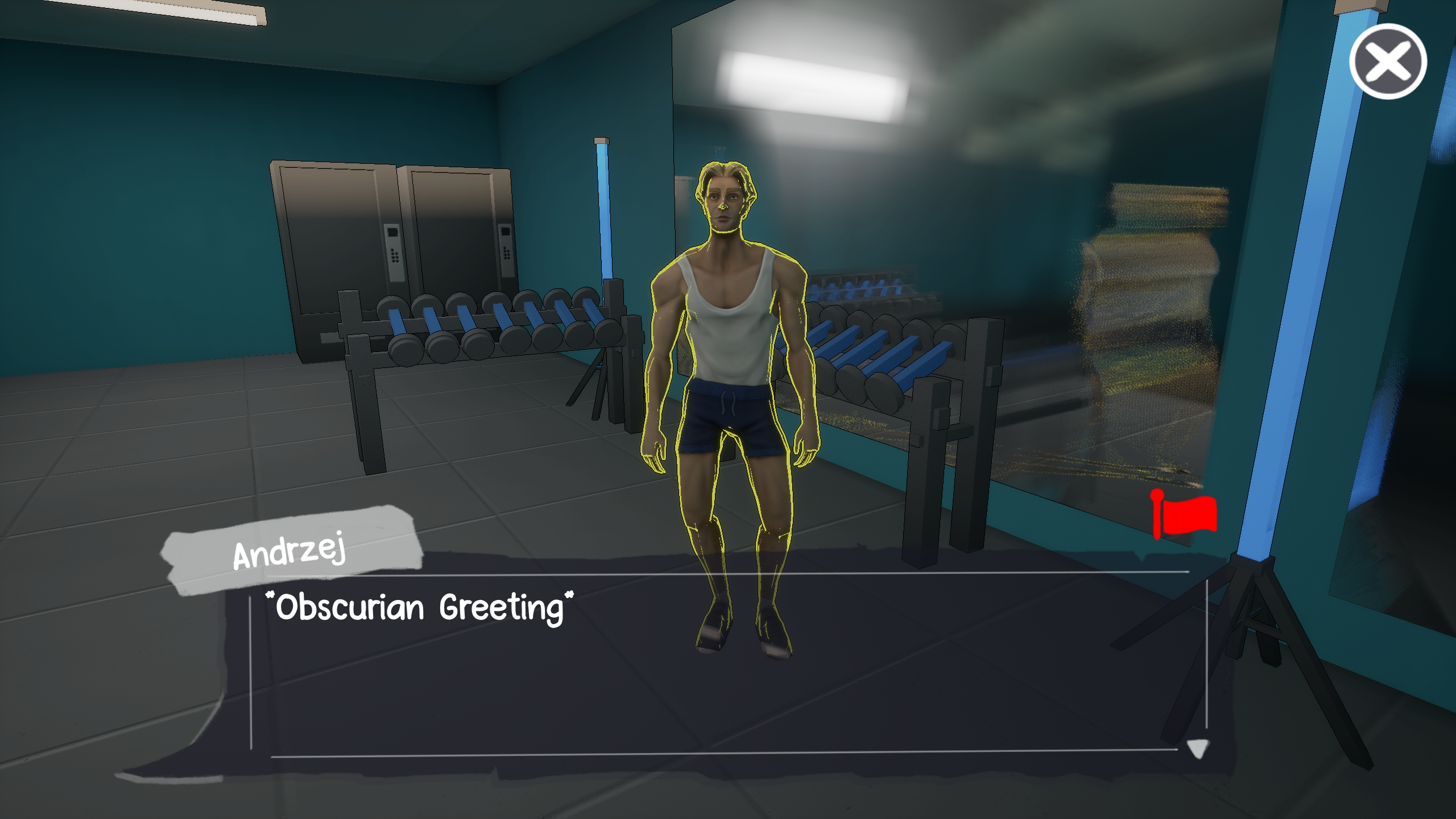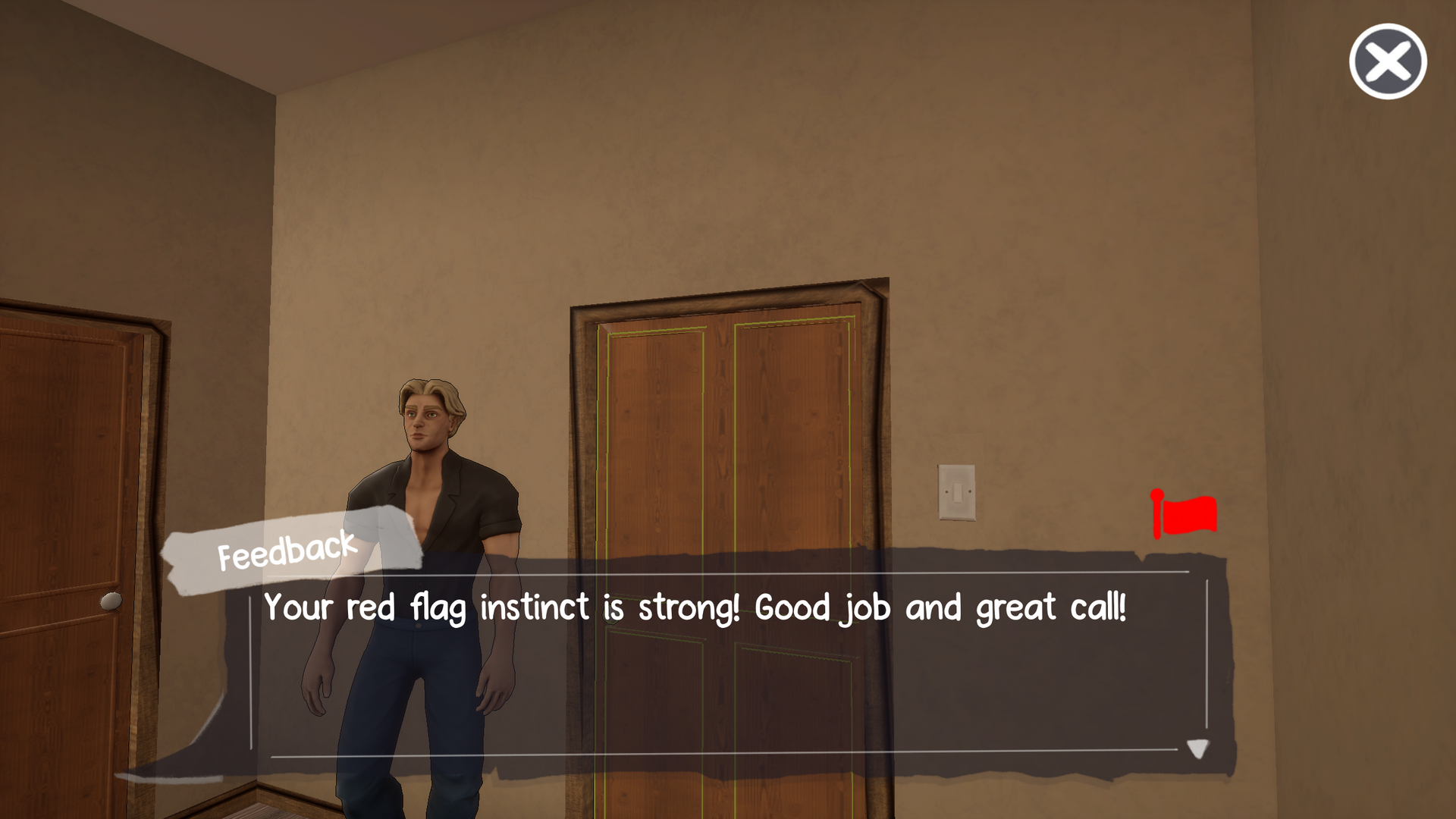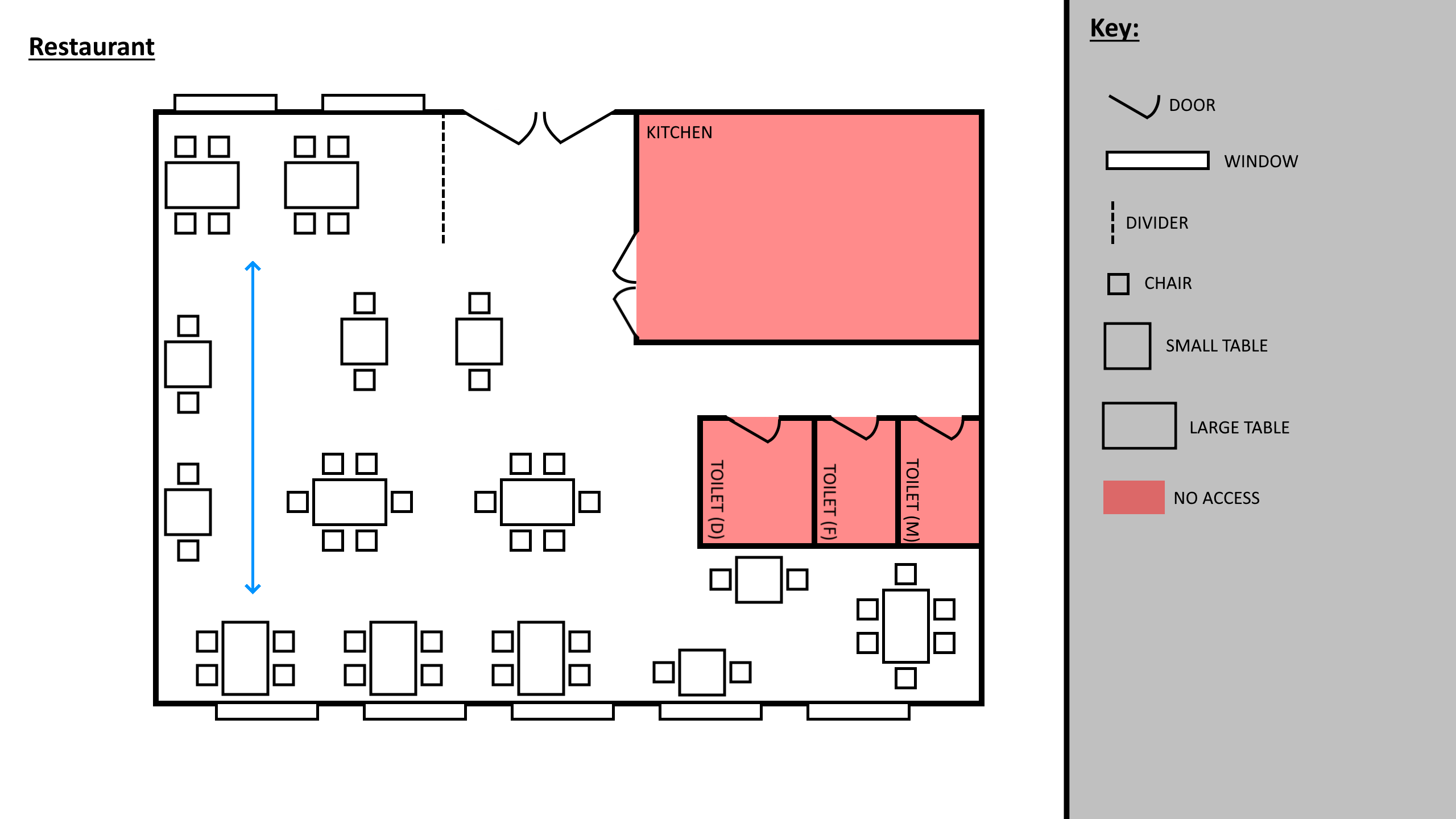Help Mark Escape
Help Mark Escape is a 3D visual novel prototype developed by a student led team in collaboration with Embodied Self Defence.
The game aims to educate young people about the potentially dangerous scenarios they may encounter in life. It teaches them how to identify red flags in these situations and how they can best approach and defend themselves from them.
We worked with our client Embodied, who specialise in teaching self-defence. They provided the initial brief and intended gameplay experience, which we then adapted into a prototype for them to use for obtaining further funding and development.
My role as Lead Designer involved me designing content such as mechanics, adjusting narrative, and level design. Later on in development, I helped the programmers implement these features in Unreal Engine.
Gameplay Trailer
Interactions
To make the visual novel more engaging, I designed different interactions so the player can move around the environment and progress the story. Interactions are outlined to help stand out to the player.
Interactions are split into Dialogue, Object, and Location. Dialogue allows the player to talk to other characters in-game. This is usually to progress the story or learn more about a character.
Object interactions allow players to explore their setting, potentially getting hints about the characters or environment.
Finally location interactions let the player explore the environment at their own pace. These are usually used on doors to move between rooms and scenes.



Dialogue
The dialogue is the primary gameplay mechanic as a visual novel. It allows players to progress the story and learn more about the scenario shown.
We felt it was important to give players some choice in their dialogue options as otherwise it would just involve reading and no real decision making.
This allowed us to use branching paths for the narrative, so after I restructured parts of the narrative we used some dialogue options to branch out and alter the outcome of the story.
For our dialogue choices, we ensured there was a minimum of two choices for the player at any point to always give them a choice in how the story pans out.


Some dialogue choices use quick time events to increase the intensity of the scenario. These are used to make the player think quickly as if they were in the situation themselves.
Some dialogue options start locked and cannot be chosen by the player unless they've completed a previous action. These include interacting with objects or choosing different dialogue options.
This rewards players for taking the time to fully explore the environment, or replaying the game to learnabout alternative approaches.
The dialogue mechanic is also used for narration to progress the story, as well as the feedback mechanic where the game acknowledges the players decisions and provides feedback on how they handled themselves.
Red Flags
Red flags are used to help teach the player to identify actions people may take that could lead to a dangerous situation. The player does this via a red flag button and can use this at any point in gameplay.
There is no punishment for falsely identifying red flags, but instead rewards them for correct identification via a score shown at the end of the game.
This also encourages replaying the game to identify all red flags and continue learning how to spot them.
The score system was not implemented to the final prototype as the scope was readjusted later in development.

Attributes
One mechanic that did not make it into the final prototype was an attributes system. This is similar to a skill tree that will change over time.
Attributes are rated 1-10, starting at 5. These increase or decrease throughout the story, primarily through dialogue choices, but also through their interactions.
- Awareness: Exploring the environment.
- Composure: Staying calm in tense situations.
- Courage: Making brave decisions.
- Instinct: Appropriate initial reactions to situations.
- Negotiation: Avoiding and defusing conflict.
- Strength: Physical strength, working out.

Level Design
Initial Layouts
Initial level designs were created by the environment artists working on the art for those levels. However after first implementing these in engine we realised there were some issues with our intended mechanics and gameplay using these layouts.
Primarily there were issues with size and layout, some rooms felt empty and others didn't work with our side scrolling movement. To fix this, I researched different level design techniques and took inspiration from real life examples of the types of levels we were creating.
I then remade the layouts built around our movement mechanics and intended gameplay, indicated by the blue arrows in each picture.
Implementation
After restructuring the level designs, I worked on reimplementing them in engine using the available assets at the time.
These were iterated a few times to better suit the assets and improve the layout further as we were able to test it using our movement.
I also added new lighting to better suit the space, and also match the intended time of day for the scenario used in each level.
GDD & Project Report
 ×
×








